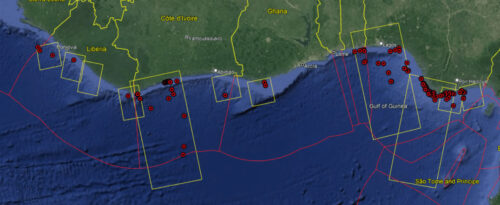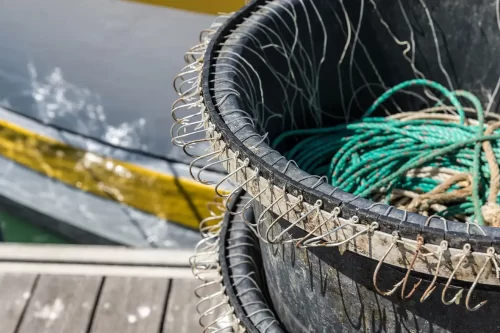Ocean stewardship begins with sharing information, requires courage and leadership
Martin Exel, managing director of Seafood Business for Ocean Stewardship (SeaBOS), speaks on the importance of the seafood industry’s role in promoting transparency and sustainability.
Information sharing has the ability to transform fisheries governance. Through increased transparency and cutting-edge technology and analysis, Global Fishing Watch is supporting governments around the world in their management efforts.
Aligning efforts with those conducted by industry will benefit ocean stewardship and ultimately deliver significant advantages to industry as a result. Access to public vessel authorization and identification and tracking data provides industry operators and producers that follow the rules with an opportunity to demonstrate their compliance. Stakeholders throughout the supply chain are able to conduct due diligence, while illicit operators seeking to undermine legitimate industry can be more easily identified.
We sat down with Martin Exel, managing director of Seafood Business for Ocean Stewardship (SeaBOS) to learn more about the importance of the seafood industry’s role in achieving sustainable oceans through transparency.
This article has been edited for clarity and flow.
Q: As managing director of SeaBOS, what do you see as the key elements of ocean stewardship?
A: Ocean stewardship is about acknowledging our challenges, creating a clear vision of where we want to be, identifying solutions and then leading the charge to implement those solutions. It takes courage and leadership.
With a partnership between science and industry at the very core of SeaBOS, our key elements include commitments to overcome challenges such as: illegal, unreported, and unregulated (IUU) fishing; forced labor; environmental degradation; misuse of antibiotics important to human health; and more. But stewardship is not just about getting rid of the negatives – it also has to demonstrate the positives to encourage others to join us on the journey towards a healthier ocean and industry. It’s also about being able to tell a story, and raise awareness and sensitivity of the outstanding issues related to sustainability to a wider scope of stakeholders.
Increased traceability and transparency are key tools to help eliminate IUU fishing and forced labor, improve management of our fisheries, aquaculture, and health of our ocean, as well as improve our dialogue with the community about the many positives of sustainable seafood production.
Q: You mention transparency is key, what are the critical steps for the fishing industry to pursue greater transparency?
A: Demonstration of the value proposition for transparency in seafood production is the starting point. Otherwise it becomes seen as just another cost, another extra layer of regulation and another reporting requirement someone will have to complete. To identify the value proposition requires development of trust, constructive dialogues and collaboration across typical divides, to achieve great results.
Once there is alignment on the benefits of transparency, then technology becomes a facilitator. That’s because the more cost-effective, efficient, reliable, and easy to use that any system can be, the more likely it is to be implemented. And the linkage to various traceability platforms with interoperable data elements can enhance the ability to unlock further value, through being able to mitigate risks (e.g. to avoid mislabelling of seafood, or brand replacement/fraud) as well as being able to show the origin of the seafood, and promote the positive sustainability story throughout the supply chain.
We also require good regulation, along with effective compliance and enforcement, to ensure those who would otherwise undermine the legal, sustainable industry do not benefit from their negative or illegal activities. Policies that encourage sustainable practices are also invaluable.
Collaborative actions within and amongst industry, government, and civil society can help improve transparency, such as through public lists of vessel registries, licenses and authorizations, to show who is legally allowed to be fishing or growing seafood in any particular area.
Q: What are some of the barriers preventing the fisheries industry from embracing public tracking of their fishing activity?
A: The biggest challenge remains the need to retain confidentiality surrounding commercial activities, both from competitors in legal, sustainable fisheries, but also from IUU operators who would use the data for their own purposes (e.g. to avoid detection from legal fleets, or to identify fishing ‘hot spots’ to target during seasonal or spatial closures for legal industry).
There is also the issue of deliberate (or accidental) misrepresentation of activities which can arise from publicly available data. This can lead to substantial reputational damage for little positive gain, and provide disincentives for even the most positive of industry supporters. So both aspects need to be dealt with, up front, before any program can be successful in a lasting way. Solutions such as the use of blockchain technology which, while not necessarily publicly available, can still be accessible to external auditors to validate activities, for summary disclosure after the event.
Q: How can we overcome these barriers? What are the benefits of greater transparency that outweigh the perceived risks?
A: It is going to be essential to evaluate ways to increase transparency, but remain within the construct of keeping confidential commercial information safe, and providing clear assurances that the data will not be compromised.
The benefits and risks vary from fishery to fishery, and region to region. In some instances there will be a very clear value proposition for greater transparency. In others, it may be a disincentive.
There is no ‘one size fits all’ solution we can look to, but there are multiple different solutions, once we agree on the challenges to be overcome. It requires collaboration across groups who have not traditionally worked together, and lots of dialogue. If it was easy, full transparency would have been available long ago. But it is possible – we just need to work out how to achieve it, together.
Q: How do you envision Global Fishing Watch data and technology being used by the seafood sector?
A: The technology and platform offered by Global Fishing Watch provides a great opportunity for the seafood sector to work in a collaborative way to achieve great outcomes. It draws together government, industry, science, and civil society and forges clear alliances to achieve results. There are a few hurdles as mentioned earlier, but all things can be addressed with dialogue, consideration of others’ viewpoints, and development of trust.
I see multiple different approaches being at the fore depending on the seafood sector: the risks they may be trying to mitigate; the region; and the perceived need for transparency to address those risks. For example, Global Fishing Watch may have limited direct efficacy for aquaculture production (which is already highly visible), but may have a significant role with increased transparency for the vessels operating to capture feed species that want to prove their catches are sustainable before they sell them for feed to the aquaculture operators. Or transparency in relation to monitoring the use and movements of carrier vessels for large scale wild catch fisheries could become a key area. It will require collaboration with the industry to identify the best solutions.
Q: What do you think are big opportunities on the horizon for advancing greater transparency in the seafood sector?
A: Digital technology definitely leaps to mind, as does the possible change of consumer habits to become more aware of where seafood is coming from and particularly in the context of whether it is sustainable, legal, healthy, and good for the planet. Also, as seafood production increasingly moves to brand recognition, and market reputations play a larger role in driving successful businesses, then transparency becomes a critical risk mitigator for business. Artificial intelligence and machine learning will all begin to play a larger role in on-vessel transparency. Again – the data can be held confidential with only auditor access, but the summary disclosure reports generated from that data will raise the bar to unprecedented levels when addressing transparency and traceability. There is also the improved opportunity to tell your story better. Take the customer on your sustainability journey.
I hope that, flowing from this global pandemic, we may see concerted and lasting transparency and traceability measures throughout the seafood supply chain in a way that provides for positive government policy shifts and regulation to enforce legal and sustainable seafood production; that encourages and rewards producers and food service providers alike; and that has benefits both within business units, as well as to the customers. Together, that would help drive a transformation to sustainable seafood production, and a healthy ocean.
Martin has been in the seafood sector for 40 years, most recently with Austral Fisheries since 1997. He also works part-time since July 2019 as the Managing Director of the Seafood Business for Ocean Stewardship, or SeaBOS, which is a collaborative venture between ten of the worlds’ largest seafood businesses and the Stockholm Resilience Centre. Its aim is to transform wild capture and aquaculture fisheries to sustainable seafood production, and promote a healthy global ocean. Martin has worked in various roles including industry, government, and academia. He holds a Bachelor of Science from Victoria University of Wellington, a Graduate Diploma in Fisheries Technology from the Australian Maritime College, and is a passionate recreational angler.
Courtney Farthing manages the global transparency program at Global Fishing Watch.


